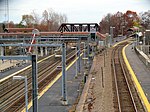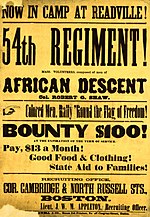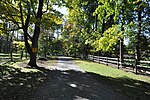Neponset Valley Parkway
Historic districts on the National Register of Historic Places in MassachusettsMilton, MassachusettsNRHP infobox with nocatNational Register of Historic Places in BostonNational Register of Historic Places in Milton, Massachusetts ... and 6 more
Parks on the National Register of Historic Places in MassachusettsParkways in MassachusettsRoads on the National Register of Historic Places in MassachusettsStreets in BostonTransportation in Norfolk County, MassachusettsUse mdy dates from August 2023

The Neponset Valley Parkway is a historic parkway in southern Boston and Milton, Massachusetts, United States. It is a connecting parkway in the Greater Boston area's network, providing a connection between the Blue Hills Reservation, Neponset River Reservation, and the Stony Brook Reservation. The parkway was constructed between 1898 and 1929 with design assistance from Charles Eliot and the Olmsted Brothers. It was listed on the National Register of Historic Places in 2005.
Excerpt from the Wikipedia article Neponset Valley Parkway (License: CC BY-SA 3.0, Authors, Images).Neponset Valley Parkway
Neponset Valley Parkway, Boston Hyde Park
Geographical coordinates (GPS) Address Nearby Places Show on map
Geographical coordinates (GPS)
| Latitude | Longitude |
|---|---|
| N 42.234722222222 ° | E -71.123888888889 ° |
Address
Neponset Valley Parkway
Neponset Valley Parkway
01286 Boston, Hyde Park
Massachusetts, United States
Open on Google Maps









